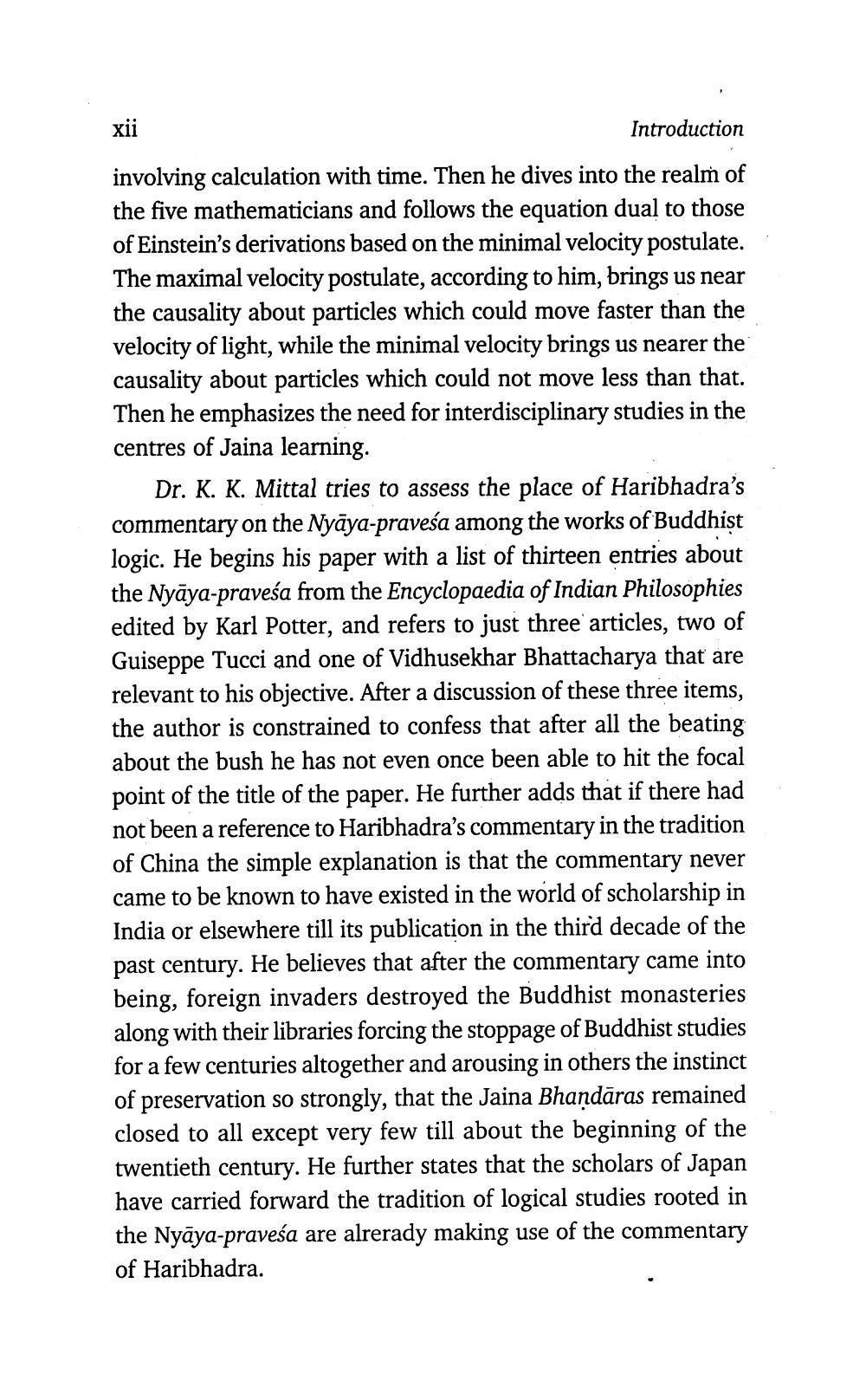________________
xii
Introduction involving calculation with time. Then he dives into the realm of the five mathematicians and follows the equation dual to those of Einstein's derivations based on the minimal velocity postulate. The maximal velocity postulate, according to him, brings us near the causality about particles which could move faster than the velocity of light, while the minimal velocity brings us nearer the causality about particles which could not move less than that. Then he emphasizes the need for interdisciplinary studies in the centres of Jaina learning.
Dr. K. K. Mittal tries to assess the place of Haribhadra's commentary on the Nyāya-praveśa among the works of Buddhist logic. He begins his paper with a list of thirteen entries about the Nyāya-praveśa from the Encyclopaedia of Indian Philosophies edited by Karl Potter, and refers to just three articles, two of Guiseppe Tucci and one of Vidhusekhar Bhattacharya that are relevant to his objective. After a discussion of these three items, the author is constrained to confess that after all the beating about the bush he has not even once been able to hit the focal point of the title of the paper. He further adds that if there had not been a reference to Haribhadra's commentary in the tradition of China the simple explanation is that the commentary never came to be known to have existed in the world of scholarship in India or elsewhere till its publication in the third decade of the past century. He believes that after the commentary came into being, foreign invaders destroyed the Buddhist monasteries along with their libraries forcing the stoppage of Buddhist studies for a few centuries altogether and arousing in others the instinct of preservation so strongly, that the Jaina Bhaņdāras remained closed to all except very few till about the beginning of the twentieth century. He further states that the scholars of Japan have carried forward the tradition of logical studies rooted in the Nyāya-praveśa are alrerady making use of the commentary of Haribhadra.




